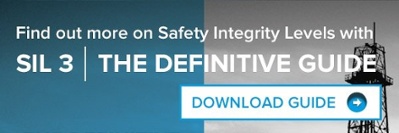Reliable access to industrial equipment is essential both for the correct functioning of the plants and for users to work safely. As a result, standards have been created throughout Europe and worldwide to foster safety levels.
EU ATEX Directives, i.e. 2014/34/EU Directive, governing the characteristics of equipment to be used in potentially explosive areas and 99/92/EC Directive governing health and safety for employees in potentially explosive locations, play a key role throughout Europe.
For those willing to export their equipment outside the EU, it is crucial to comply with IECEx certification system, widely agreed and approved in more than 30 international markets, designed to provide equipment safety worldwide.
However, manufacturers of equipment to be used in potentially explosive locations willing to address the North American market must also comply with the HazLoc (Hazardous Location) standard. This standard stems not from a North American review of European standards, but rather complies with the National Electrical Code (NEC), a US standard governing the safe installation of cables and electrical equipment. This classification is part of the National Fire Codes system, published by the National Fire Protection Association (NFPA), created to harmonize fire-fighting systems, and applied by Regions and States aiming at certifying the safe application of electrical equipment.
ATEX and HazLoc: the differences
ATEX 99/92/EC Directive lists industrial environments into three areas with different levels of hazard. Such levels are as follows:
- zone 2 includes locations where hazardous explosive atmospheres occur only under fault conditions;
- zone 1 includes locations where explosive atmospheres may occur even under normal operating conditions but for a few hours per year;
- zone 0 includes locations where explosive atmospheres may occur even under normal operating conditions for several hours per year.
For its part, HazLoc Directive divides industrial areas into two categories: division 1 and division 2.
Division 1, the most dangerous, roughly encompasses the environments in zone 0 and 1 of the ATEX directive. Division 2, on the other hand, covers locations defined as zone 2 by the ATEX Directive. The National Electrical Code also provides for methods to make the product suitable for division 1 or division 2.
Pros and Cons of the North American Legislation
The North American standard contains a number of criticalities. An example is that only electrical equipment is taken into account.
In addition, such standards are published by federally qualified certification labs, which tailor them to the needs of a particular national territory. Accordingly, the standards are uneven, as each lab can issue different standards.
The combination of zone 0 and zone 1 as well is a drawback: the equal treatment of the two areas forces users to install more complex products even when not necessary.
A positive element of the standard lies in the monitoring procedures. The manufacturer of products used in potentially explosive locations must ensure product compliance both at the design stage and afterwards. It must therefore prove compliance of all the products produced with the certified project. For this purpose, strict sample control procedures are applied to the products actually manufactured. An inspector will therefore verify several times a year whether products manufactured comply with certificate.
What about the Eurasian area?
Obligations for those interested in exporting products out of the European Union are not limited to the above. Those interested in approaching the Russian or Eurasian market must also take into account an additional certification requirement to obtain the EAC (EurAsian Conformity) certificate of compliance, a mandatory document for exporting and selling a large number of products in Russia and in the other Eurasian Economic Union countries.
The evolution of such a pattern has been similar to that of the ATEX Directive, although much more recent, with the transition from compliance with the standard to compliance with essential requirements in the technical regulation.
EAC pattern also provides for inspections to certify the safety of the product. However, this pattern is affected by outdated rules still in force, likely to be replaced over time by more up-to-date legislation. A weakness of EAC is the lack of freedom in choosing the construction techniques to protect the product.
Well, this is the worldwide overview of the safety certifications required to implement equipment in industry, crucial both to guaranteeing the correct functioning of plants and the maximum safety of personnel as well.


